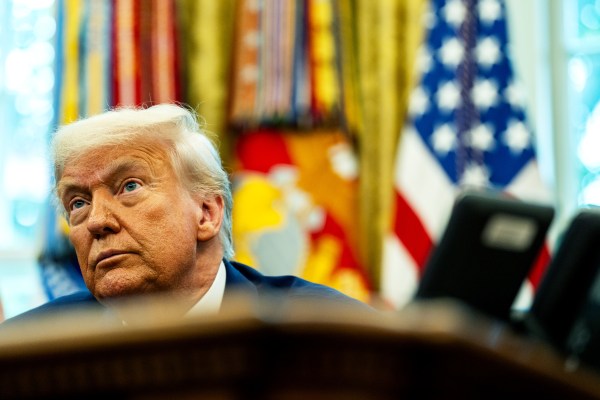Gideon Rachman, The Age of the Strongman: How the Cult of the Leader Threatens Democracy Around the World, New York: Other Press, 2022, 278pp., $27.99.
Moisés Naím, The Revenge of Power: How Autocrats are Reinventing Politics for the 21st Century, New York: St. Martin’s Press, 2022, 294pp., $29.99.
After the Cold War, hopes ran high for the triumph of liberal democracy at the “end of history.” Thirty years later, that triumph has receded into the much more distant future. It is by now a commonplace idea that democracy is on the run, suffering setbacks in countries around the globe and threatened by an upsurge in authoritarian sentiment. In this context, Vladimir Putin’s invasion of Ukraine has been a kind of coming-out party for autocracy. To be sure, the party has not gone quite as expected; nevertheless, that it happened at all reflects a certain self-confidence, a sense that the moment had arrived when autocracy no longer required the velvet glove.
Even before Russia’s invasion, analysts were seeking to understand the rise of right-wing populism and autocratic impulses. In recent years writers such as Yascha Mounk, Timothy Snyder, and Anne Applebaum have offered explanations for this phenomenon. The past few months have seen two important additions to this literature by high-profile commentators. Gideon Rachman, who previously wrote for The Economist and since 2006 has been chief foreign affairs commentator for the Financial Times, explores the rise of autocratic politicians in The Age of the Strongman, while economist Moisés Naím, who edited Foreign Policy for over a decade and is now a fellow at the Carnegie Endowment for International Peace, examines the factors that have facilitated autocracy’s global revival in The Revenge of Power. (One can hear the two of them discuss populism in Latin America on a recent edition of Rachman’s podcast, the Rachman Review.)
The two books are different in style and tone, matching their respective authors’ different journalistic backgrounds: Rachman is staid, informative, and serious (very Economist), while Naím is melodramatic, foreboding, and a bit breathless (as befits the man who turned Foreign Policy into a glossy). Though they cover much of the same ground, the books have sufficiently different emphases that they can usefully be read in tandem.
Rachman focuses on the global rise over the past two decades of strongmen—leaders who are typically “nationalists and cultural conservatives, with little tolerance for minorities, dissent or the interests of foreigners.” These figures, who “claim to be standing up for the common man against the ‘globalist’ elites,” typically ride a wave of populist support to power. Once there, they “encourage a cult of personality” and seek to dismantle the laws, institutions, and checks that would limit their power, with the ultimate goal of remaining in office for life. Their rise, says Rachman, has produced “the most sustained global assault on liberal democratic values since the 1930s.”
The strength of Rachman’s book arises from its structure. It is organized chronologically and geographically, with each chapter recounting the appearance of a new strongman leader on the world stage and his (never her) subsequent consolidation of power. He begins with the granddaddy of contemporary strongmen, Vladimir Putin, who provided the model for the many imitators that would follow. The book’s first half then tracks the rise of the strongman across different regions of the world: Recep Tayyip Erdoğan in Turkey, Xi Jinping in China, Narendra Modi in India, Viktor Orbán in Hungary, culminating in chapters on Boris Johnson and Brexit and on Donald Trump. Trump’s election in the world’s leading democracy provided the strongman phenomenon with an unfortunate veneer of legitimacy. It is thus no accident that this chapter occupies a key place at the book’s center, after which Rachman traces the strongman’s further spread in countries across the globe—the Philippines, Saudi Arabia, Israel, Brazil, Mexico, Ethiopia—in a kind of autocratic trickle-down effect.
By organizing his book in this fashion, Rachman (in addition to offering a seminar on global politics) allows several themes to come to the fore. Each chapter title includes not only the name of a particular strongman but also the decisive year of his rise to power—Putin in 2000, Xi in 2012, Trump in 2016, and so on—providing this series of case studies with a surprising narrative momentum as we track the strongman’s spread from year to year and continent to continent. Various patterns emerge through their reiteration in these various examples.
Especially striking is how often the politicians in question were initially hailed in the West as liberalizing reformers and modernizers. (Rachman on occasion even quotes himself making such blunders.) One cannot help wondering in retrospect whether overconfidence in history’s end colored these repeated misreadings of the political tea leaves. Typical strongman strategies also appear time and again: campaigns against independent media and other branches of government, especially the courts; polarizing attacks on elites by leaders claiming to speak for the people; intense cults of personality; the deliberate sowing of confusion through social media networks; constitutional revisions to cement electoral advantages and remove term limits; and the cynical, self-interested use of emergency powers. The reader, seeing these same techniques employed over and over with success, is left wondering why the strongmen seem to be so much better at learning from each other than democratic citizens are at recognizing their ploys.
Naím describes the same strategies, but his goal is more ambitious: to provide an overall conceptual framework for understanding the resurgence of autocracy. He does this in terms of what he calls the “3 Ps”: populism, polarization, and post-truth. These are the “new techniques for gaining unlimited power and then keeping it.” The first two are clear enough, and (as Naím occasionally admits) neither they nor their combination are really new. But Naím nicely describes how these first two Ps enable the would-be autocrat to gain and keep power by democratic means and thus to create what he calls “stealth” autocracy. Autocrats take advantage of existing dislocations caused by economic stagnation, immigration, corruption, or crime to drive a wedge between political or economic elites and “the people.” After riding this populist support to the top, they then dismantle the checks and balances that normally constrain power.
Polarization is not only a means by which populist autocrats gain and keep power, it also helps produce what Naím usefully identifies as “anti-politics,” a “rejection of politics” that ensues when people come to feel revulsion against “the political class as a whole and the entire way politics is practiced on the right, the left, and the center.” When this happens, the political system becomes increasingly ungovernable, as “desperate voters turn to iconoclastic figures”—strongmen—“to deliver themselves from the miseries inflicted on them.”
Anti-politics feeds in turn off the third and most interesting P, “post-truth.” By this Naím means a technique perfected by Russia but widely copied by autocrats around the world: the deliberate fostering of “FUD” (fear, uncertainty, and doubt) through the mass production of misleading news, rumors, conspiracy theories, alternative perspectives, and outright lies, all of which can be spread widely via social media and the internet at very little cost, thus making the very openness of democratic societies a tool to be exploited by their enemies. Post-truth leaves citizens dazed and bewildered, unable to sort through the mass of information confronting them or know whom to trust, believing whatever appeals to their pre-existing biases or is simply most frightening. Post-truth is perhaps the most alarming feature of the new autocracy, because it creates “an epistemic muddle that threatens the entire democratic project,” leaving citizens doubtful that any views are true at all. And then politics becomes only a struggle for power. Free self-government ultimately requires a confidence that goodness and truth are real things.
Naím’s book is less clearly structured than Rachman’s and he sometimes drifts away from his 3 Ps in order to discuss other aspects of autocracy that don’t fit neatly within his conceptual umbrella. Nonetheless, he helps us see not simply that strongmen have gained power in country after country, but also how and why this happened. His proposals for fighting back, however, are disappointingly imprecise. He concludes with an appeal for “bold experimentation in government” and an “experimental, disruptive mindset” of the sort that democracies adopt in the private sector. As examples, he briefly mentions ranked-choice voting and the use of citizen assemblies. But he also gestures vaguely toward electoral reform, campaign finance reform, and even the regulation of political speech. He says too little about these things to draw many conclusions, but one detects a whiff of rationalist overconfidence in political engineering.
Rachman’s more sober conclusion is less alarmist (though by no means complacent) and in some ways more interesting. He points toward the inherent weaknesses of strongman rule and wonders whether these will lead to its downfall. Strongman governance is often incompetent. It suffers from a lack of expertise or the dynamism that arises from the free flow of ideas. It is prone to succession problems and is unstable due to its complete dependence on the man at the top. Not only do strongmen age, they also tend toward “megalomania or paranoia.” Because autocracy rests on fear and coercion, it suppresses criticism and has trouble correcting its own mistakes.
Two and a half millennia ago, Aristotle wondered which form of government was most short-lived. His answer: tyranny. Rachman’s conclusion echoes his earlier claim. Strongman government and autocratic rule pit citizens against each other, discourage original thinking, foster enmity and distrust, and destroy alternative sources of power that might check or mitigate their own excesses. They contain the seeds of their own eventual collapse.
Along the way, however, they can do a lot of damage. This is Rachman’s own last word: “There may be a lot of turmoil and suffering before the Age of the Strongman is finally consigned to history.” Indeed.






Please note that we at The Dispatch hold ourselves, our work, and our commenters to a higher standard than other places on the internet. We welcome comments that foster genuine debate or discussion—including comments critical of us or our work—but responses that include ad hominem attacks on fellow Dispatch members or are intended to stoke fear and anger may be moderated.
With your membership, you only have the ability to comment on The Morning Dispatch articles. Consider upgrading to join the conversation everywhere.